Seasonal shelters serving Upper Valley continue to be full
|
Published: 03-21-2025 2:51 PM
Modified: 03-23-2025 8:20 PM |
LEBANON — Kayti True, who has been homeless for three years, lately has been couch surfing at friends’ homes in Wilder and White River Junction.
But on a half dozen nights this winter when she found herself without a roof over her head, she spent the night in the Lebanon warming shelter on Mechanic Street.
“It’s way better than being in a tent or being on the street,” True, 40, said while eating dinner at the Listen community dining hall in downtown White River Junction earlier this month.
The Lebanon Emergency Winter Shelter opened for its second season on Jan. 8. It’s operated by the city, in partnership with Upper Valley Haven, a nonprofit based in White River Junction that provides services and shelter to homeless community members.
The Lebanon shelter is currently open every night from 5 p.m. to 8 a.m. and an additional two hours on Sunday mornings so guests can sleep in.
Guests are offered a hot dinner at night and a to-go breakfast in the morning as well as hygiene products, storage space for belongings and connections to housing and employment resources from the Haven staff.
Lebanon has one of the two winter overnight shelters in the Upper Valley. There’s also the Warm Welcome Shelter in Claremont, which is run mostly by volunteers.
“The need is obvious,” Gwen Williams, the supervisor for the Lebanon seasonal shelter said. The shelter has room for 14 people, but up to 20 show up some nights “and that’s not everyone,” she added.
Article continues after...
Yesterday's Most Read Articles
 Upper Valley residents turn out in droves for protests against federal policies and cuts
Upper Valley residents turn out in droves for protests against federal policies and cuts
 Hartford man dies while incarcerated
Hartford man dies while incarcerated
 High school soccer: As Grabill heads to Sunapee, Richardson takes over Hanover vacancy
High school soccer: As Grabill heads to Sunapee, Richardson takes over Hanover vacancy
 ‘The revenue just isn’t there’: House Finance Committee slashes $271M in jobs, services from Ayotte’s budget proposal
‘The revenue just isn’t there’: House Finance Committee slashes $271M in jobs, services from Ayotte’s budget proposal
 Kenyon: DH CEO asserts decision to close infertility program was ‘thoughtfully evaluated’
Kenyon: DH CEO asserts decision to close infertility program was ‘thoughtfully evaluated’
The Lebanon shelter has reached capacity nearly every night since it opened and has served 64 different individuals as of Thursday, Williams said.
The Haven is currently in the process of constructing a new year-round shelter and resource center at 608 North Main St. in White River Junction, the former site of 25,000 Gifts.
Homelessness across the country has been on the rise since the beginning of the COVID-19 pandemic in 2020.
In Vermont, nearly 3,500 people were homeless in 2024, according to the U.S. Department of Housing and Urban Development’s “point in time” survey done one night each January. Vermont has the fourth highest homeless rate of any state in the country, reported HUD, as the federal agency is known.
In New Hampshire, the HUD 2024 survey found more than 2,200 homeless people.
On average, usually two or three community members seeking shelter are placed in motels per night because there isn’t enough space in the shelter, Williams said. The Haven pays for Vermonters to stay in motels, while Lebanon pays for New Hampshire residents. In 2024, Lebanon spent about $150,000 on hotel rooms for unhoused residents.
It cost Lebanon about $154,000 this year to operate the shelter. The state of Vermont provided an additional $61,000 because about a quarter of the guests last winter were Vermonters.
The shelter is scheduled to close for the season April 15, pushing many guests back into uncertain living conditions.
“We are planning with shelter staff what the exit plans are going to be for shelter guests,” Lebanon’s Human Services Director Lynne Goodwin said.
Some guests have transitioned into Hixon House, the Haven’s adult shelter, some have plans to move in with friends and others will return to camping once the weather warms up, Goodwin said.
In Claremont, community members have come together for two years now to run a similar overnight warming shelter in the winter months.
The Claremont Warm Welcome Shelter opened after James Russon, a homeless resident in Claremont, died in November of 2024 at age 69 shortly after contracting hypothermia.
“We’re not a nonprofit,” Zadiah Eisenberg, Trinity Episcopal Church’s pastoral community connections coordinator, said in a phone interview. “We’re just a group of people who decided people shouldn’t be out in the cold.”
This year, the shelter opened on Jan. 1, and operated for 90 days out of Trinity church on Broad Street. Since then, it’s been located at the downtown First Congregational Church.
As of Thursday, the shelter, which can host up to 20 guests per-night, had served over 60 unique individuals and averaged 10 guests a night, Eisenberg said.
At the beginning of the season, volunteers set a goal of $45,000 to cover the costs of keeping the Claremont shelter open daily from 9 p.m. to 8 a.m. through the end of March when the shelter will close for the season.
Through donations from churches, local organizations, community members and a $10,000 contribution from Southwestern Community Services — a nonprofit with offices in Keene and Claremont that provides resources for low-income individuals and families — they exceeded their goal by about $10,000.
“There had been very little fundraising,” Eisenberg said. “We let the community know of our existence and our need, and the money came in.”
There are four paid staff members and about 50 volunteers operating the shelter.
“It is heartening that the community makes this happen, but it’s also sad and disturbing that there’s no solid plan for next year,” Eisenberg said. “There’s not enough bandwidth to start planning next season until we close. It’s problematic and makes us miss grant opportunities.”
Claremont’s welfare office refers community members needing a place to stay to Southwestern Community Services’ shelter on Pleasant Street and the Warm Welcome Shelter. If no beds are available, households are put into motels. The city has spent over $120,000 on rooms since July 1 for 25 families, welfare director Sue Carr said.
The city had allocated about $470,000 in its fiscal 2025 welfare budget. At its meeting last week, the City Council approved Carr’s request to spend up to an additional $175,000 so the welfare department can continue to support families with motel rooms and rental assistance through June.
Both the Lebanon and Claremont shelters are low-barrier shelters, meaning there are few requirements guests have to meet in order to stay.
A criminal record or lack of sobriety does not bar someone from using the warming shelters. In Lebanon, guests can keep well-behaved pets with them, and the Claremont shelter partners with Lost My Way Animal Shelter to keep pets for the night.
“The only barrier is people’s behavior,” Eisenberg said.
The Haven plans to make the shelter at 608 North Main St. low barrier as well.
“The idea of low barrier and harm reduction go together,” Michael Redmond, the executive director of the Haven, said. “It’s safer for everyone to be inside than outside.”
Earlier this month, Rick Riff, 54, was found dead underneath a bridge spanning the White River between the Bugbee Senior Center and the Co-op Food Store in White River Junction, an area frequently used as an encampment by people who are unhoused.
Riff is at least the third death of a homeless person in Hartford in less than four years.
Demolition of the shuttered 25,000 Gifts building is expected to begin by the end of this month, with the goal of opening the shelter in spring of 2026.
Currently, the Haven plans to have 20 shelter beds on the second floor of the building and day services on the first floor.
The shelter will be open year-round, 24 hours a day. Instead of being first-come-first-serve like the warming shelters, guests will be able to leave during the day and still have a bed saved for them when they return.
Lebanon expects to operate the winter shelter on Mechanic Street for one more season, and then refer community members to the low-barrier shelter in White River Junction once it’s up and running, Goodwin said.
Once completed, the two-story, 9,000-square-foot building will be a “one-stop shop” for services, Redmond said.
“There will be room to invite in other organizations periodically,” Redmond said. The Good Neighbor Health Clinic, which provides free health care to uninsured and underinsured community members and WISE, a nonprofit providing resources for survivors of domestic and sexual abuse are examples of local organizations the shelter plans on hosting.
Some White River Junction residents are unhappy with aspects of the concept for the low-barrier shelter.
“There should be more beds and less services,” said Marie Alvin during a March 13 meeting at the Bugbee Senior Center meant to inform neighbors of the project and the timeline of construction.
Alvin lives near the Haven’s current shelters located on Hartford Avenue and said she sees “overflow” now.
Willard Hoshimoto lives near the Shadylawn Motel in White River Junction. He thinks a shelter is a good use of the 25,000 Gifts building, but he worries about who could stay there.
“How would you like it if they built this shelter in your neighborhood?” Hoshimoto said while eating dinner at the Listen’s community dining hall earlier this month.
Haven staff recognize the fears neighbors of the low-barrier shelter have and plan to host community gatherings as the shelter’s opening date approaches.
“We’re going to improve the community by developing a rundown building into something the community can be proud of,” Redmond said.
Emma Roth-Wells can be reached at erothwells@vnews.com or 603-727-3242.

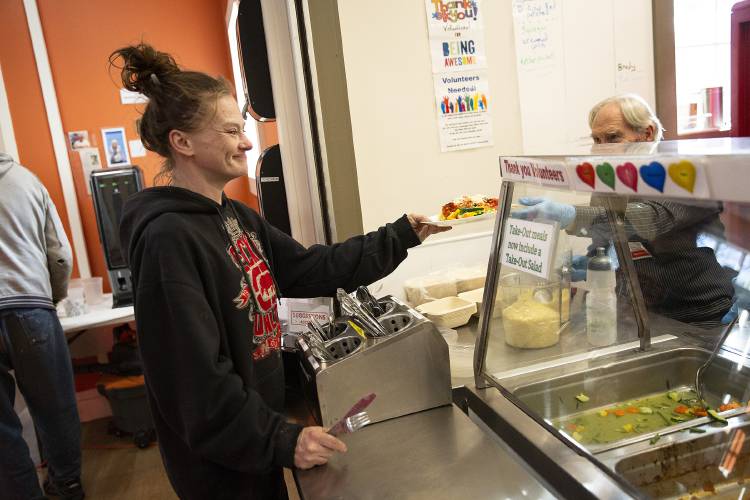
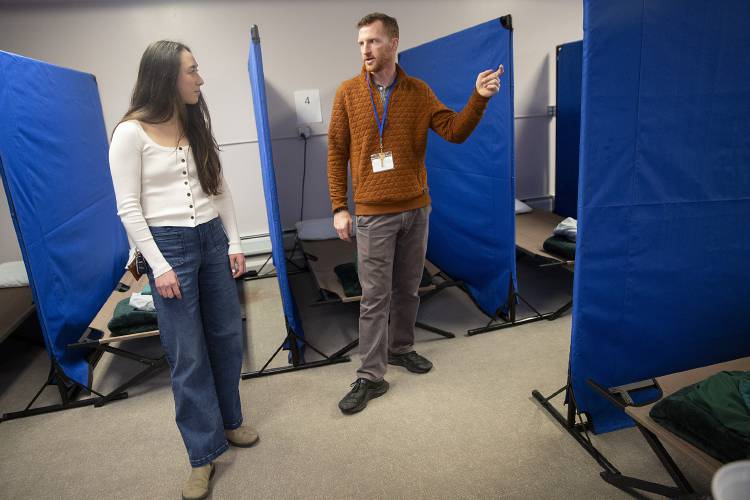
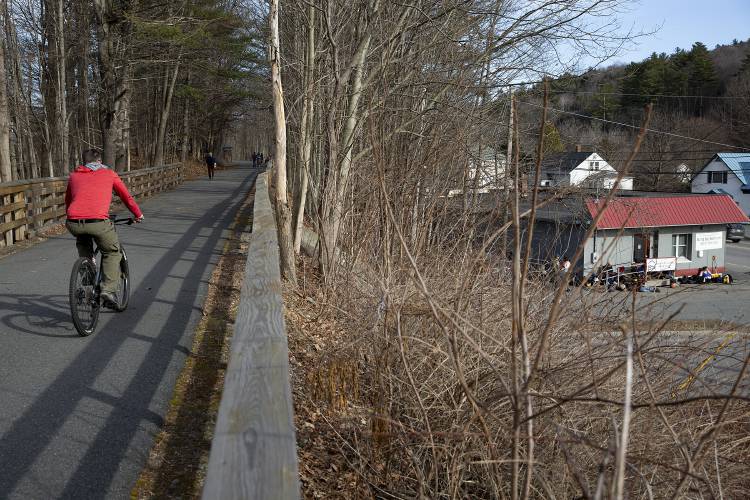
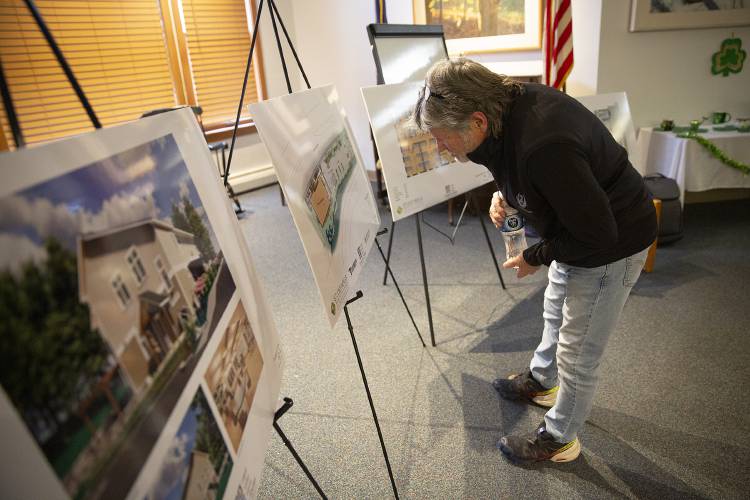
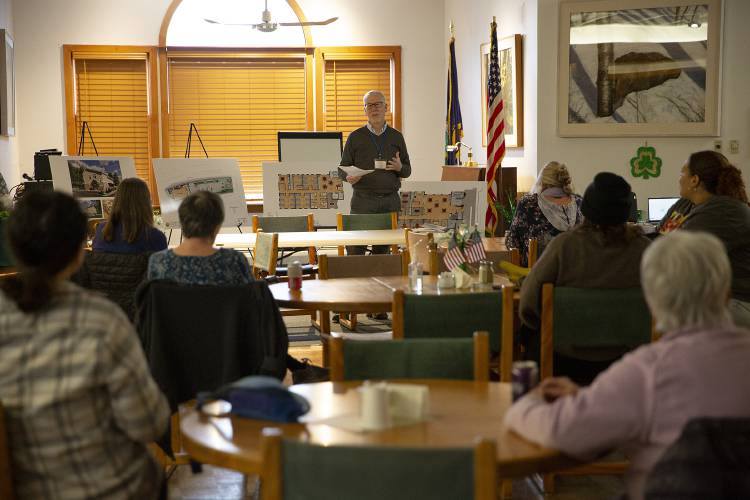





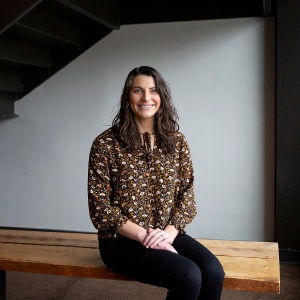 Hartford hires its first housing and development specialist
Hartford hires its first housing and development specialist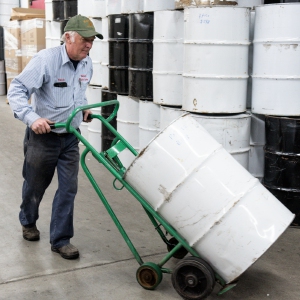 So far exempt from tariffs, maple industry still feels their effects
So far exempt from tariffs, maple industry still feels their effects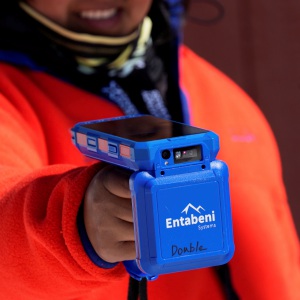 A New Hampshire ski resort bets on tech to compete with industry giants
A New Hampshire ski resort bets on tech to compete with industry giants
